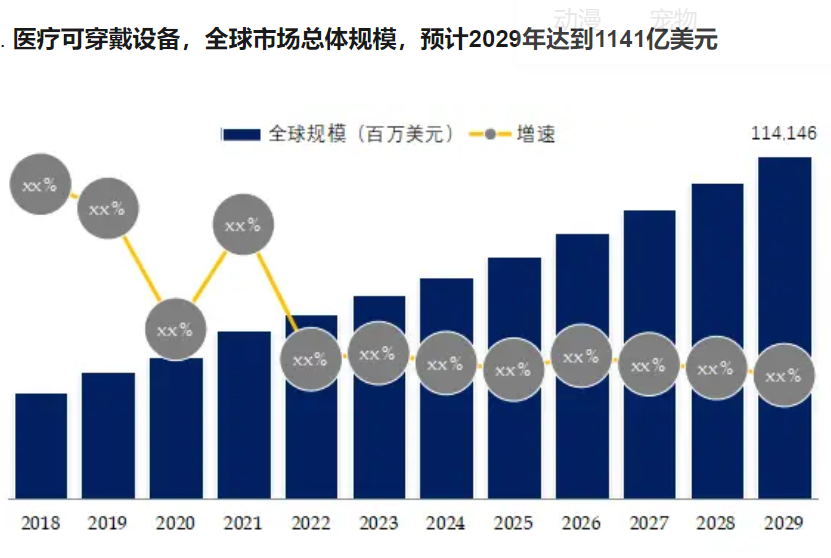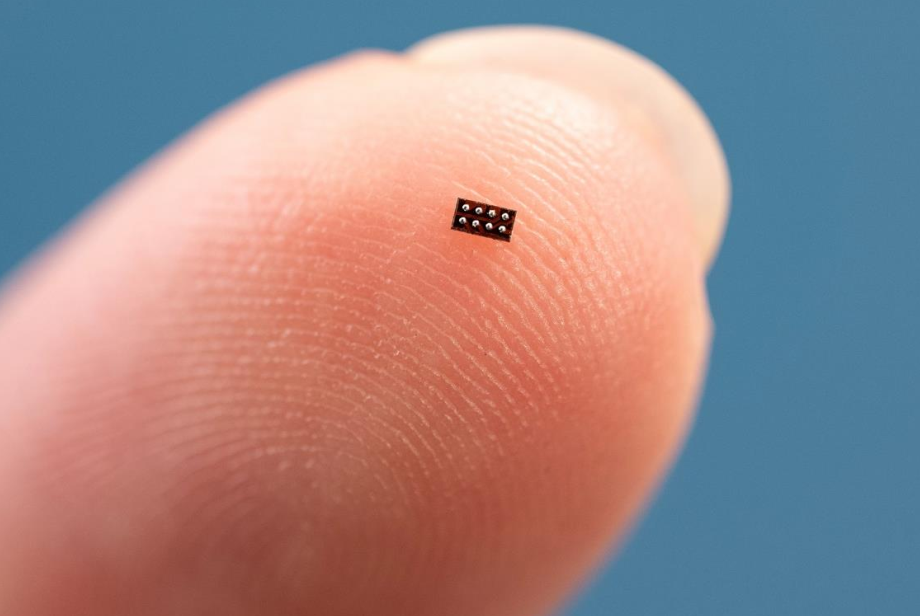As medical wearable devices and personal electronics continue to trend towards miniaturization, the requirements for the electronic components integrated within them are becoming increasingly stringent. In particular, medical-grade wearable devices must not only be smaller, lighter, and thinner in physical dimensions but also meet critical metrics essential for medical applications, including high precision, high reliability, low power consumption, and long battery life.
Multi-Factor Collaboration Fuels the Booming Medical Wearable Device Market
According to the “Global Medical Wearable Device Market Report 2023-2029” released by the QYResearch research team, the global medical wearable device market is expected to reach $114.1 billion by 2029, with a compound annual growth rate (CAGR) of 9.2% over the next few years.

This rapid growth is primarily driven by several factors: first, the increasing number of elderly individuals significantly boosts the demand for medical wearable devices, which can help seniors monitor their health in real-time, issue emergency alerts, and provide assistance; second, the public’s health awareness is gradually increasing, and lifestyle changes are leading to a growing demand for personal health monitoring and management; third, continuous innovations in semiconductor technology, including advancements in biosensing technology, data analysis, and remote monitoring, enable medical wearable devices to accurately and in real-time output health data, providing strong support for disease prevention and management.
However, the further popularization of these medical wearable devices faces several obstacles, such as data security and privacy issues, as well as the complexity of regulations and laws. Most importantly, the high cost of devices and their reliability and accuracy have yet to meet requirements.
The Launch of the World’s Ultra-Compact MCU to Support Micro Application Innovations
To help address the market challenges mentioned above, Texas Instruments (TI) has recently launched a global ultra-compact MCU. This product combines cost advantages, small size, and ease of use, while also featuring high performance and low power consumption.

Yiding Luo, product line manager for MSP microcontrollers at Texas Instruments, stated: “Two years ago, TI first launched the Arm® Cortex®-M0+ microcontroller product family—the MSPM0 series. Our initial strategy was to create a cost-effective MCU series to meet diverse market demands while continuously optimizing for performance, size, and ease of use.”
To date, Texas Instruments has launched over 150 MSPM0 microcontrollers for customers to choose from. These microcontrollers are highly extensible, cost-optimized, and easy to use, significantly helping customers shorten their time to market.
The aforementioned global ultra-compact MCU is a new member of the MSPM0 MCU family. It is reported that compared to similar products in the industry, this MCU has reduced its size by 38%, even smaller than a black pepper grain, and is referred to as a ‘resistor with a brain’ due to its size being smaller than that of a resistor.
Despite its small size, it integrates a comprehensive set of functions. It includes the most basic MCU analog and digital functionalities. The ultra-compact packaging allows designers to continuously optimize PCB space without compromising performance, making it highly suitable for compact applications, including but not limited to wearable medical devices, personal electronics, and industrial sensors.
Yiding Luo emphasized: “This MCU product fully demonstrates the advantages of WCSP packaging technology, with an 8-ball WCSP size of only 1.38mm². It also features: 16KB flash memory, one 3-channel 12-bit analog-to-digital converter, six general-purpose input/output pins, and standard communication interfaces such as URT, SPI, and I2C, along with a low-power timer.”
Overcoming R&D Challenges from Three Dimensions to Achieve Optimal Performance Balance
In designing this MCU product, TI also faced several technical challenges. Yiding Luo stated: “TI overcame R&D challenges from the design, manufacturing, and packaging dimensions.”
He further explained: “From the design dimension, TI leveraged its rich analog product line resources and closely collaborated with the analog team to integrate ADCs, operational amplifiers, DACs, and comparators into the MCU in a highly optimized manner, achieving the best balance of performance, cost, and size; from the manufacturing dimension, this MCU uses 65nm process technology to find the optimal solution for power consumption, performance, and cost. This process technology optimizes the digital part while considering the size limitations of analog components; from the packaging dimension, thanks to TI’s accumulated experience and continuous optimization capabilities in mass production across multiple product lines, this MCU successfully adopted WCSP packaging, achieving a breakthrough in minimum package size.”
Some may question whether such a small size compromises key metrics like heat dissipation and reliability. Does it affect signal integrity? Yiding Luo responded: “Due to the very low power consumption of this product, there are no issues with heat dissipation; regarding reliability, we have also made many considerations and will not lower reliability standards due to small packaging and low cost. All our MSPM0 products will undergo automotive-grade certification.”
Regarding signal integrity issues, he stated: “The small chip packaging does indeed require some design considerations for signal integrity. However, TI is not new to achieving such small packaging products; we have smaller packaged products in many of our analog product lines. Through experience sharing and learning across different product lines, we have accumulated a lot of experience to ensure the integrity of the entire signal chain while achieving small sizes.”
Conclusion
Currently, the trend towards miniaturization, long battery life, low cost, and high performance in medical wearable devices and personal electronics is becoming increasingly evident, which also drives continuous innovation in MCU products along these dimensions. The global ultra-compact MCU product launched by TI has achieved a good balance in these aspects, empowering innovation in micro applications.
END